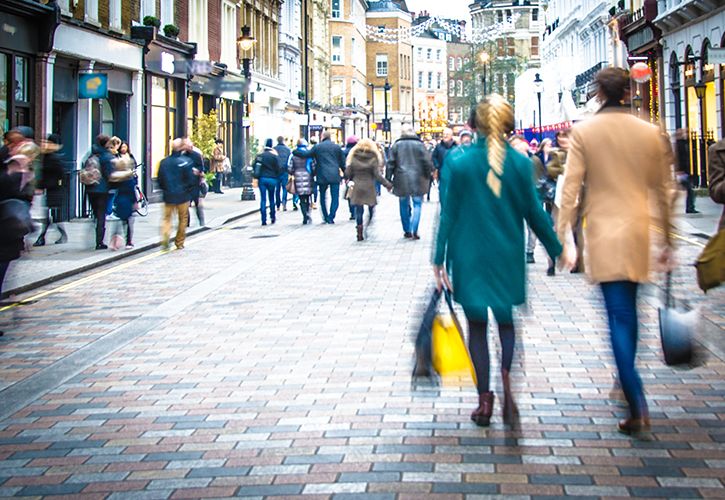UK DIY News
Retail Sales Declined in February

The ONS has published retail sales data for February, noting a decline in retail sales volumes despite analyst expectations of a 0.6% increase.
Retail sales volumes fell by 0.3% in February 2022 following a rise of 1.9% (unrevised) in January 2022; sales volumes were 3.7% above their pre-coronavirus (COVID-19) February 2020 levels.
Non-store retailing sales volumes fell by 4.8% over the month following strong growth in December (2.7%) and January (4.0%); sales volumes were 33.2% above their pre-coronavirus February 2020 levels.
Food store sales volumes fell by 0.2% in February 2022 with large falls in alcohol and tobacco stores, which may be linked to higher spending in pubs and restaurants as confidence increased in going out; food store sales volumes were 0.1% below pre-coronavirus February 2020 levels.
Non-food stores sales volumes rose by 0.6% in February 2022 with growth in clothing (13.2%) and department stores (1.3%), with wider socialising and the return to the office following the lifting of Plan B restrictions at the end of January potential factors; these increases were partly offset by falls in other non-food stores (negative 7.0%) and household goods stores (negative 2.5%) with some retailers suggesting the stormy weather during the month had impacted footfall.
Automotive fuel sales volumes rose by 3.6% in February 2022 as the lifting of Plan B restrictions in England at the end of January 2022 increased travel; sales volumes were above pre-coronavirus February 2022 levels (0.9%) for the first time.
The proportion of retail sales online fell to 27.8% in February 2022, its lowest proportion since March 2020 (22.7%), continuing a broad downward trend since its peak in February 2021 (37.7%).
Industry Commentary
BRC
Responding to the latest ONS Retail Sales Index figures, which showed 10.0% year-on-year sales growth in January (value, non-seasonally adjusted retail sales excluding fuel: J3L2), Helen Dickinson, Chief Executive of the British Retail Consortium, said:
“Sales growth fell slightly in February as rising concerns about inflation appeared to dampen consumer appetites. Stronger sales results could be seen for clothing and footwear, while food spend remained down on last year for the second consecutive month. Online sales fell as compared to last year, when the country was in its third lockdown, as more people returned to the shops. Nonetheless, as competition for limited consumer spend increases, retailers must continue to invest in their physical and digital offerings.”
“Consumers face a rocky road ahead, with rises in the energy price cap and NI contributions both coming next week. Meanwhile confidence has been knocked by the continued rise in inflation, as well as the uncertainty created by the situation in Ukraine. While the Chancellor’s Spring Statement offered some relief for consumers, rising inflation and next week’s rise in the energy price cap mean that real discretionary incomes are likely to fall in the coming months, as the cost of living soars.”
PwC
Commenting on the Office of National Statistics retail sales figures for February 2022, Lisa Hooker, consumer markets leader at PwC, said:
“No surprise in the slight 0.3% headline decline in retail sales volumes in February, with high street footfall impacted by the series of storms over half term. In pound terms, retail sales value, excluding fuel, is still almost 10% higher than before the pandemic, showing that it to be one of the most resilient sectors over the last two years, with shoppers still keen to spend their lockdown savings.
“And despite storms Dudley and Eunice, consumers have also been returning to high streets, with online sales at their lowest level since before the pandemic. Just 28% of retail sales were online last month, compared with 38% this time last year, albeit at the height of the third lockdown. Online sales fell across almost every category of retail against the previous month, suggesting that more shoppers are returning to their pre-pandemic habits.
“However, despite the strong recovery by the retail sector over the last year, there are already signs that the cost-of-living crisis is hitting confidence. Almost all of the slowdown in sales in February was accounted for by a decline in non-grocery sales. This week’s inflation figures saw a sharp increase in food prices which will inevitably eat into consumers’ ability to spend on discretionary items going forward. So February’s bump up in fashion sales as shoppers looked for new outfits to go back to the office may not last.
“As Britons are forecast to face the largest fall in disposable income in recent times, and with limited targeted help from the Chancellor in the recent Spring Statement, retailers’ annus horribilis may yet be ahead of them.”
Source : ONS; BRC; PWC
Insight provides a host of information I need on many of our company’s largest customers. I use this information regularly with my team, both at a local level as well as with our other international operations. It’s extremely useful when sharing market intelligence information with our corporate office.











































